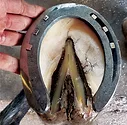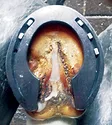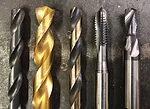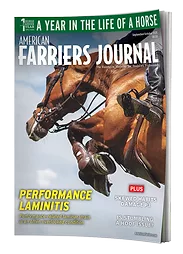Advertise Follow Us
American Farriers Journal

View Archived Issues
April 2022
Volume: 48
Edition: 3
American Farriers Journal is the “hands-on” magazine for professional farriers, equine veterinarians and horse care product and service buyers.
-
Table Of Contents
Table Of Contents
Product KnowledgeTherapeutic Horseshoeing Modifications that Work
New York farrier shares solutions that he uses in his everyday workRead MoreProduct KnowledgeWhat Role Does Nutrition Play in Treating Equine Laminitis?
Blood work analyses reveal critical diet deficiencies and excesses in afflicted horsesRead MoreTherapeutic ShoeingHow to Achieve Benefits of the Onion Horseshoe
Farriers will need time, education and money when making and applying this deviceRead MoreVeterinarian and Farrier Teamwork: Ultrasound and the Pastern Region
Guidelines for better veterinarian-farrier collaboration on ultrasound diagnosticsRead MoreBadass Rigs & TrailersWork Van Blends Needs with Flexibility
Second rig helps farrier with sport horse practice demandsRead MoreIn MemoriamRemembering David Wilson
Hall of Fame farrier made his mark in competition and leadershipRead MoreProduct KnowledgeCopper-Alloy Horseshoes Offer Nonstop Bacterial Protection
Application reduces ground reaction forces, research findsRead MoreProduct KnowledgeHoof Pads Offer Versatile Sole Protection
Application can promote hoof growth, but improper use can cause problemsRead MoreProduct KnowledgeTool Coatings Can Boost or Hinder Your Hoof-Care Business
High-quality coatings are a cost-effective way to increase the life and performance of drill bits and tapsRead MoreIs More Biotin Better for Horse Hoof Health?
B-vitamin is critical for hoof function, but it’s not the sole answerRead MoreProduct UsageWhen Should Farriers Add Borium?
Here are some considerations from a Standardbred shoer for applying boriumRead MoreProduct KnowledgeHow to Regrind a Hoof Knife
Minnesota farrier and hoof knife maker Mark Thorkildson shares his process for regrinding a hoof knifeRead MoreResearch Journal: April 2022
The information, ideas, and opinions expressed are those of the author and do not necessarily represent those of the United States Department of Agriculture.Read More -
Featured Articles
Featured Articles
Product KnowledgeTherapeutic Horseshoeing Modifications that Work
New York farrier shares solutions that he uses in his everyday workRead MoreBadass Rigs & TrailersWork Van Blends Needs with Flexibility
Second rig helps farrier with sport horse practice demandsRead More - Digital Edition
-
Online Extras
Online Extras
























